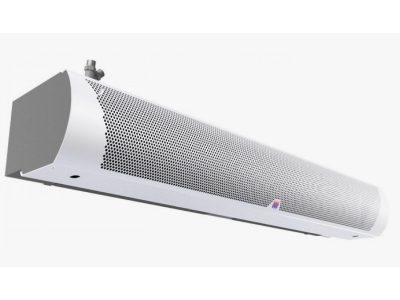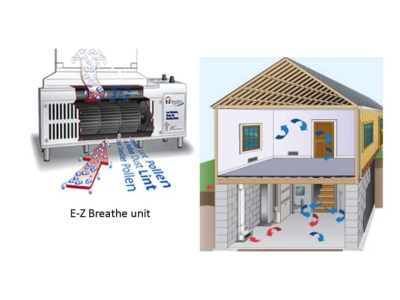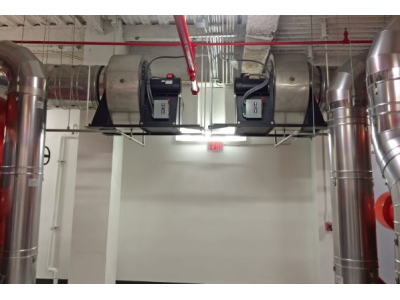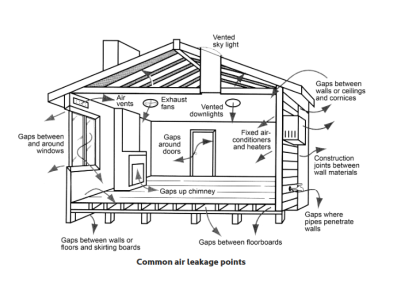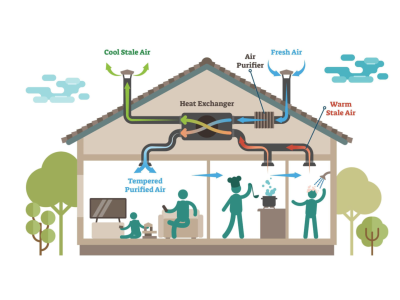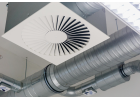
Ventilation Systems: Types, Selection, and Essential Equipment
Introduction to Ventilation Systems
In the USA, the market for climate control technology and equipment offers consumers a vast selection of ventilation systems tailored to diverse needs and environments. Properly selected and professionally installed ventilation equipment ensures a comfortable living and working environment by maintaining healthy air quality, regulating temperature, and eliminating pollutants.
Purpose and Functions of Ventilation Systems
Modern construction materials have enabled builders to achieve airtight sealing of buildings. As a result, indoor air can become significantly more polluted than outdoor air, especially in residential homes and offices where individuals spend up to 90% of their time. To ensure adequate air exchange, forced ventilation systems are essential. These systems remove carbon dioxide, excess moisture, unpleasant odors, and pollutants while supplying fresh, oxygen-rich air into the building.
Requirements for Ventilation Equipment
Ventilation equipment in the USA must adhere to stringent building standards, sanitary norms (SNiP), and increasing consumer demands. Key requirements include:
- Adequate Power: Must provide at least 30 m³/h air exchange per person to meet daily oxygen needs.
- Multifunctionality: Capable of ventilating, cooling, or heating air depending on seasonal temperature fluctuations.
- Low Noise Operation: Must operate quietly without causing discomfort to occupants.
Equipping private homes, apartments, country cottages, and offices with advanced ventilation systems is now a standard practice to ensure a healthy and comfortable indoor climate.
Types of Ventilation Systems
1. Supply Ventilation Systems
Supply ventilation systems introduce fresh air into the building, ensuring a consistent flow of oxygen-rich air. They are commonly used in modern airtight buildings in the USA to counteract the effects of reduced natural ventilation.
2. Exhaust Ventilation Systems
Exhaust ventilation systems remove stale air from specific areas such as bathrooms, kitchens, garages, and workshops. They help eliminate moisture, odors, and pollutants, maintaining a clean and healthy indoor environment.
3. Supply-Exhaust Ventilation Systems
Supply-exhaust systems combine both supply and exhaust functions, providing a balanced air exchange. These systems are highly efficient and suitable for larger residential and commercial spaces in the USA, ensuring comprehensive air quality management.
4. Local and Central Ventilation Systems
- Central Ventilation Systems: Cover the entire building, efficiently managing air exchange across all rooms.
- Local Ventilation Systems: Focus on specific areas, such as kitchens or bathrooms, providing targeted air quality control.
5. Ducted and Ductless Ventilation Systems
- Ducted Systems: Require the installation of ductwork during construction or renovation, facilitating air distribution throughout the building.
- Ductless Systems: Offer flexibility without the need for extensive ductwork, making them ideal for retrofitting existing structures in the USA.
Supply Ventilation: Features and Functions
Purpose of Supply Ventilation
The primary function of supply ventilation systems in the USA is to draw in fresh, oxygen-rich air from the outside and distribute it throughout the building. These systems often include additional features such as:
- Air Filtration: Removes dust, dirt, and exhaust gases, ensuring the air quality remains high.
- Temperature Control: Can cool or heat the incoming air, similar to air conditioners.
- Air Distribution: Provides either targeted or uniform airflow within the space.
Equipment for Supply Ventilation
The USA market offers a variety of supply ventilation equipment, including:
- Wall-Mounted Dampers: Control the flow of incoming air.
- Ventilators: Facilitate the entry of fresh air while preventing the ingress of pollutants.
- Aerogivers: Efficiently manage air intake and distribution.
- Breeze Units: Combine multiple functions for enhanced air quality and comfort.
These devices typically feature components such as plastic housings, filters, heaters, and quiet fans, ensuring effective and silent operation.
Exhaust Ventilation Systems
Features of Exhaust Ventilation
Exhaust ventilation systems in the USA are designed to remove polluted air from specific areas, enhancing overall indoor air quality. These systems are essential for:
- Bathrooms: Eliminating moisture and odors.
- Kitchens: Removing cooking fumes and grease particles.
- Garages and Workshops: Ventilating exhaust fumes and pollutants.
Equipment for Exhaust Ventilation
Exhaust ventilation equipment includes:
- Protective Grilles: Installed at air intake points to prevent debris and insects from entering.
- Fans: Facilitate the movement of stale air out of the building.
- Silencers: Reduce noise generated by exhaust fans, ensuring quiet operation.
These components work together to maintain a clean and healthy indoor environment by efficiently removing unwanted air.
Supply-Exhaust Ventilation: Unique Features
Integrated Supply-Exhaust Systems
Supply-exhaust ventilation (SEV) systems in the USA integrate both supply and exhaust functions into a single unit. These systems offer enhanced efficiency by:
- Heat Recovery: Utilize heat exchangers to transfer thermal energy from outgoing stale air to incoming fresh air, reducing energy consumption.
- Balanced Airflow: Ensure a consistent and balanced air exchange, maintaining optimal indoor air quality.
- Advanced Controls: Feature sophisticated electronic controls for precise management of ventilation parameters.
Brands and Manufacturers
Leading brands in the USA market for supply-exhaust ventilation systems include:
- Mitsubishi Electric: Renowned for their high-efficiency systems and advanced technology.
- Honeywell: Offers reliable and user-friendly ventilation solutions.
- Systemair: Known for their innovative and energy-efficient ventilation products.
- Trane: Provides robust and durable ventilation systems suitable for both residential and commercial applications.
These brands offer a range of models that cater to different building sizes and ventilation needs, ensuring quality and performance.
Advantages and Disadvantages of Ventilation Systems
Advantages
- Improved Air Quality: Efficiently removes pollutants, allergens, and excess moisture.
- Energy Efficiency: Modern systems, especially those with heat recovery, reduce energy consumption.
- Comfort: Maintains a consistent and comfortable indoor climate.
- Health Benefits: Reduces the risk of respiratory issues and other health problems related to poor air quality.
- Versatility: Suitable for a wide range of applications, from small homes to large commercial buildings.
Disadvantages
- Initial Cost: High-quality ventilation systems can be expensive to purchase and install.
- Installation Complexity: Professional installation is often required, especially for ducted systems.
- Maintenance Requirements: Regular maintenance is necessary to ensure optimal performance and longevity.
- Space Requirements: Ducted systems require additional space for ductwork, which may not be feasible in all buildings.
Essential Equipment for Ventilation Systems
The USA market offers a wide range of ventilation equipment to suit various needs and applications:
- Dampers: Control the flow of air within the ventilation system.
- Filters: Essential for removing dust, allergens, and pollutants from incoming air.
- Dehumidifiers and Humidifiers: Regulate indoor humidity levels, enhancing comfort and air quality.
- Fans: Drive the movement of air through the system, ensuring efficient ventilation.
- Air Distribution Units: Direct airflow to different parts of the building for balanced ventilation.
- Protective Grilles: Prevent the entry of unwanted debris and pests into the ventilation ducts.
- Automatic Controls and Sensors: Enable smart management of ventilation parameters, improving efficiency and user convenience.
Backdraft Dampers
Backdraft dampers are crucial components that ensure air flows only in the intended direction, preventing unwanted backflow of air. These dampers are especially useful in preventing cold air from entering during the heating season and maintaining consistent indoor temperatures.
Conclusion
Ventilation systems are integral to maintaining a healthy and comfortable indoor environment in the USA. Whether it's ensuring fresh air supply, removing pollutants, or regulating humidity levels, selecting the right ventilation system tailored to your specific needs is essential. At safsale.com, we offer a comprehensive range of high-quality ventilation systems and equipment from leading manufacturers, ensuring you find the perfect solution for your home or office. Invest in a reliable ventilation system today to enhance your indoor air quality and overall well-being.
For more information and to explore our selection of ventilation systems, visit safsale.com
